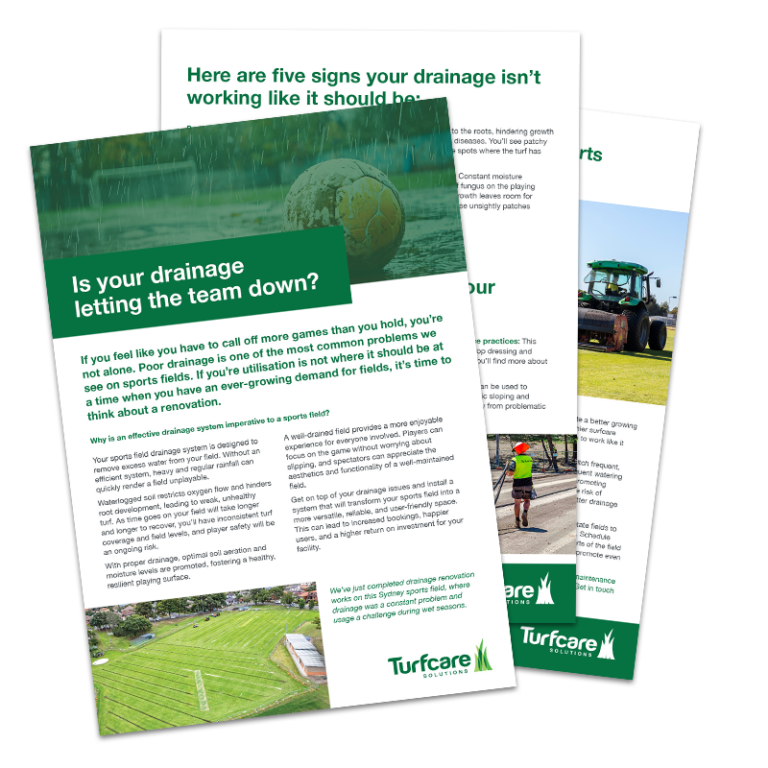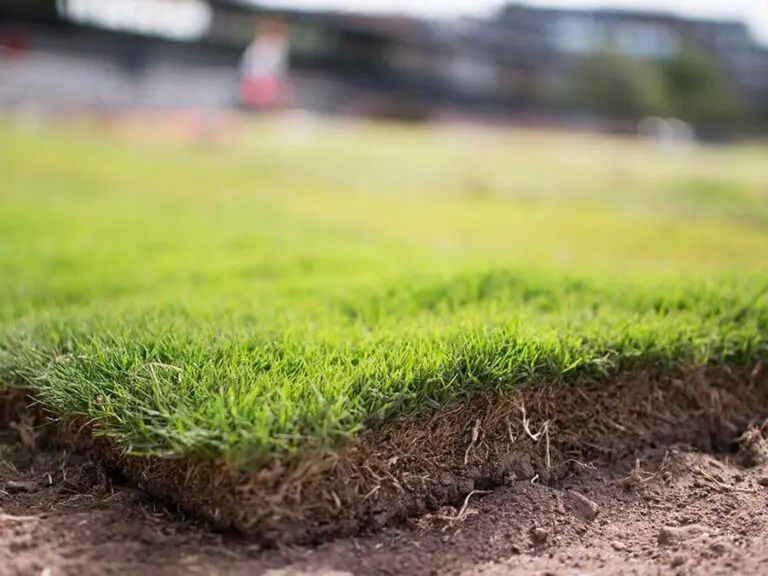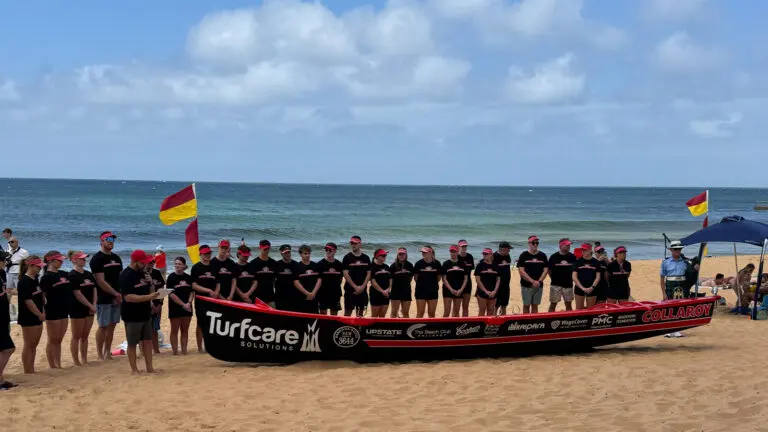If you feel like you have to call off more games than you hold, you’re not alone.
Poor drainage is one of the most common problems we see on sports fields. If you’re sports turf drainage and utilisation is not where it should be at a time when you have an ever-growing demand for fields, it’s time to think about a renovation.
Why is an effective sports turf drainage system imperative to a sports field?
Your sports field drainage system is designed to remove excess water from your field. Without an efficient system, heavy and regular rainfall can quickly render a field unplayable. Waterlogged soil restricts oxygen flow and hinders root development, leading to weak, unhealthy turf. As time goes on your field will take longer and longer to recover, you’ll have inconsistent turf coverage and field levels, and player safety will be an ongoing risk.
According to Football NSW, 38% of existing grounds in NSW have drainage issues. That’s a lot of fields that could be out of action!
With proper sports turf drainage, optimal soil aeration and moisture levels are promoted, fostering a healthy, resilient playing surface. A well-drained field provides a more enjoyable experience for everyone involved. Players can focus on the game without worrying about slipping, and spectators can appreciate the aesthetics and functionality of a well-maintained field.
Get on top of your drainage issues and install a system that will transform your sports field into a more versatile, reliable, and user-friendly space. This can lead to increased bookings, happier users, and a higher return on investment for your facility.
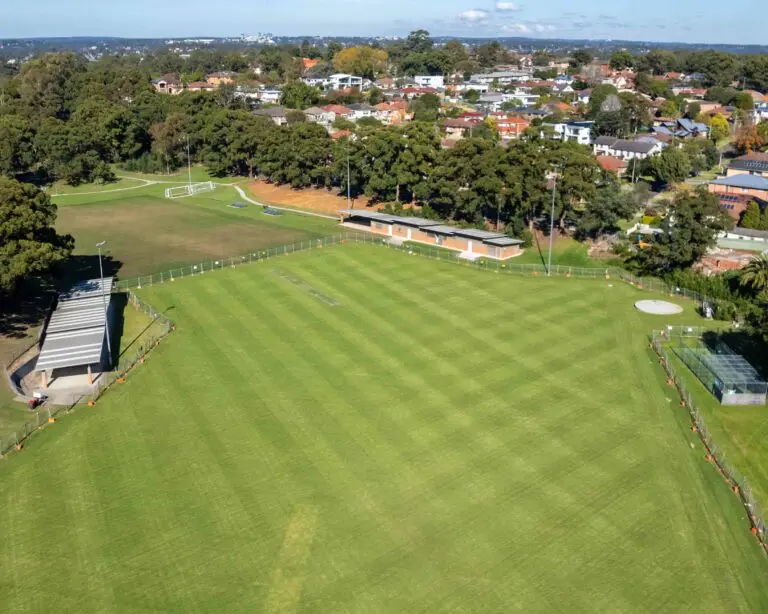
Here are five signs your drainage isn’t working like it should be:
Puddles and ponding: After rainfall or irrigation, water remains stagnant on the field for extended periods, forming puddles – or even large ponds!
A slippery surface: Even after moderate rain, the playing surface becomes soft and mushy underfoot, increasing risk of falls and injuries.
Uneven ground: Over time, a poorly drained field can develop uneven patches and depressions causing soil erosion and compaction.
Patchy growth: Poor drainage can lead to stressed and unhealthy turf. Waterlogged soil restricts oxygen flow to the roots, hindering growth and promoting fungal diseases. You’ll see patchy grass growth and bare spots where the turf has died completely.
Weeds and diseases: Constant moisture promotes the growth of fungus on the playing surface, while patchy growth leaves room for weeds. You’ll notice these unsightly patches continue to increase.
What can you do to improve your sports turf drainage and increase usage?
Every sports field is different, and there is no one-size-fits-all solution to sports turf drainage. But with a professional assessment and an understanding of your field profile, we can find the best long-term solution.
Some of those solutions may include:
A new sports turf drainage system: Installing a completely new drainage system might be necessary for severely compromised fields.
Upgrade of existing systems: Extension of existing drains or adding features like sand bands or slit trenches can significantly improve lateral water flow.
Soil Amendments: Adding sand or other amendments to the existing soil profile can improve drainage capacity. This allows water to percolate deeper into the soil rather than pooling on the surface.
Improved field maintenance practices: This includes tasks like aeration, top dressing and smart watering techniques. You’ll find more about this on the following page.
Grading and levelling: This can be used to redirect water flow, with specific sloping and contouring to move water away from problematic areas.
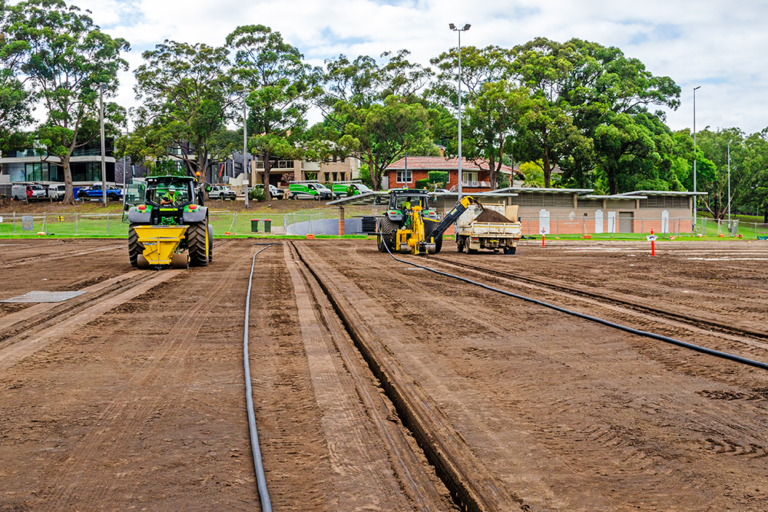
Do you have an effective sports field maintenance regime?
Proper sports field drainage is critical, but without an effecitive turf maintenance regime post renovation, you will find yourself over time suffering the same issues as before. Here are some of the components that must be part of your sports turf maintenance program for effective sports turf drainage.
Regular aeration: Aeration creates channels in your turf for air and water to penetrate deeper, alleviating compaction, encouraging root growth and significantly improving drainage. Aerate should take place 3 – 4 times a year.
Strategic topdressing: Topdressing enables us to level minor depressions through the application of a uniform thin layer of soil or finely granulated organic material over the turf surface. It helps to amend the soil profile, and create a better growing environment for the turf. A healthier surfcare means your drainage will be able to work like it should.
Smart watering techniques: Ditch frequent, shallow watering. Deep and infrequent watering encourages deeper root growth, promoting drought tolerance and reducing the risk of waterlogging. This translates to better sports turf drainage and a healthier surface.
Field rotation: It’s imperative to rotate fields to avoid the consequences of overuse. Schedule practices and games on different parts of the field to allow the turf time to recover and promote even wear and tear.
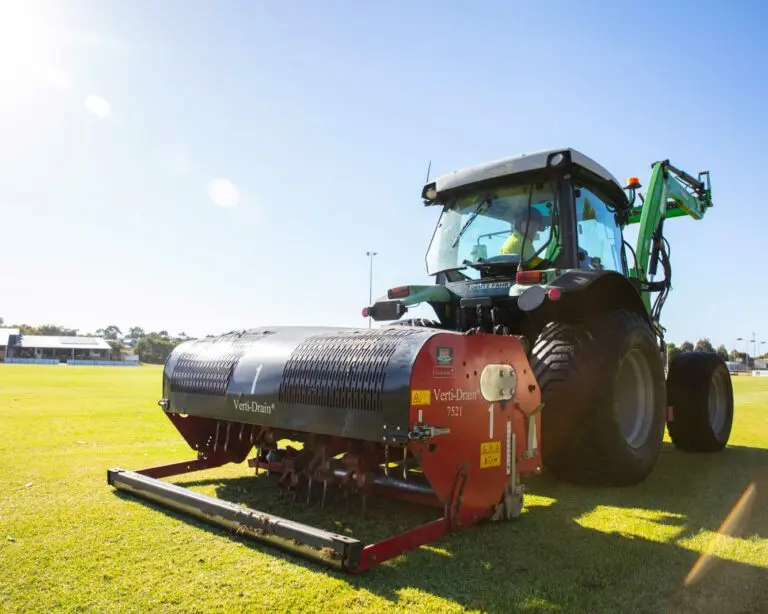
If you’d like to know more, get in touch with our team of sports turf drainage contractors today.
